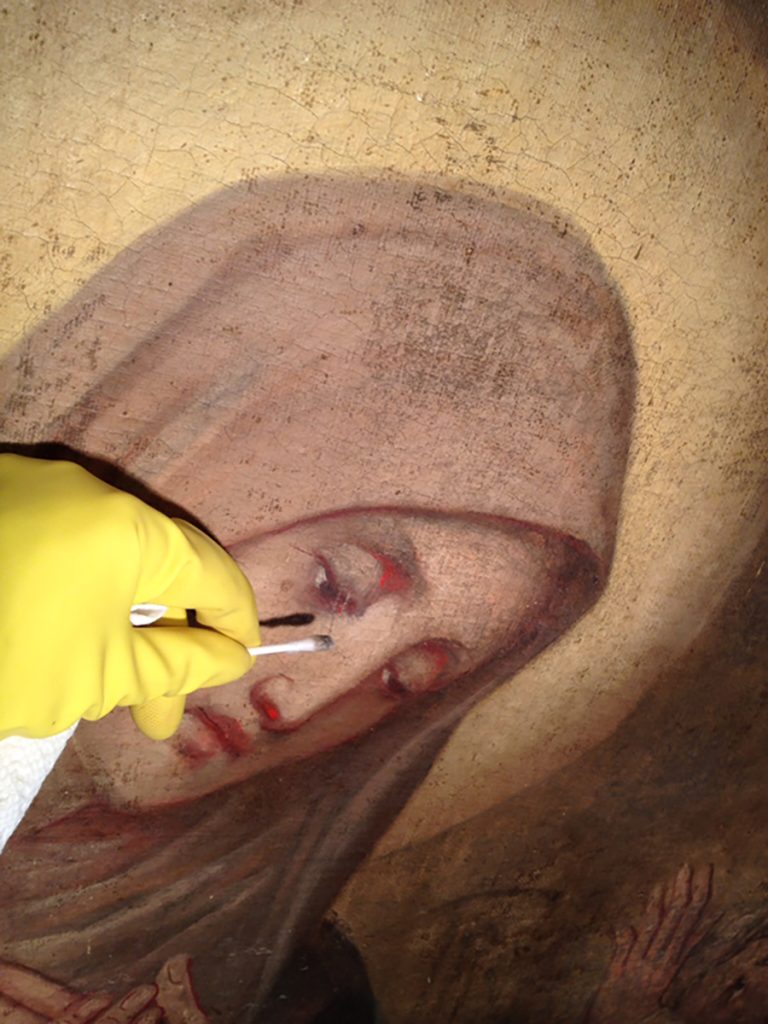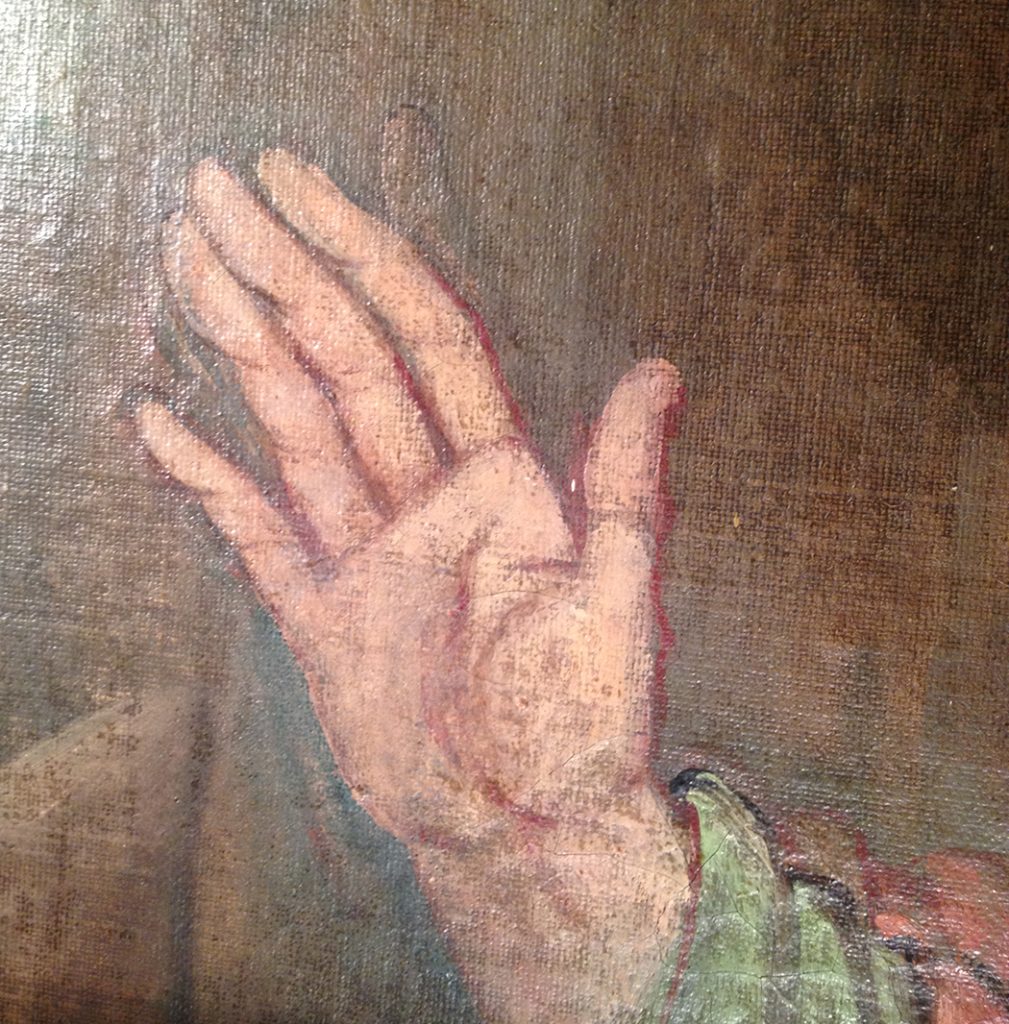30 feet high in a Harlem Church
I’m not afraid of heights – a good thing when the scaffold places me thirty feet above a marble floor. Recently, I supervised the cleaning of a large Crucifixion painting in a Harlem church. The accumulated soot and grime was heavy, obscuring the painting’s details and color. While removing the dirt, I saw that the artist changed his or her mind during its creation, altering details and painting over them. Over time, the underpainting began to show through the top layers, and ghosts began to appear. I always find it strangely satisfying to encounter these anomalies; they remind me that imperfection is part of us all.
The thinning overpaint became “lean”, losing some of its oil as it aged. These changes created the illusion that a hand has more than five fingers. This is part of the painting’s history and, in this case, would not be “fixed” or painted over.
Since the scene was high above the congregation, the artist chose to heighten the red color in Mary’s face. This exaggerated the drama of the scene and enabled the congregation to “read” Mary’s face from far below. We don’t know the artist’s identity since religious paintings are often unsigned, but we can appreciate his or her intentions.



I’m not afraid of heights – a good thing when the scaffold places me thirty feet above a marble floor. Recently, I supervised the cleaning of a large Crucifixion painting in a Harlem church. The accumulated soot and grime was heavy, obscuring the painting’s details and color. While removing the dirt, I saw that the artist changed his or her mind during its creation, altering details and painting over them. Over time, the underpainting began to show through the top layers, and ghosts began to appear. I always find it strangely satisfying to encounter these anomalies; they remind me that imperfection is part of us all.

The thinning overpaint became “lean”, losing some of its oil as it aged. These changes created the illusion that a hand has more than five fingers. This is part of the painting’s history and, in this case, would not be “fixed” or painted over.

Since the scene was high above the congregation, the artist chose to heighten the red color in Mary’s face. This exaggerated the drama of the scene and enabled the congregation to “read” Mary’s face from far below. We don’t know the artist’s identity since religious paintings are often unsigned, but we can appreciate his or her intentions.

